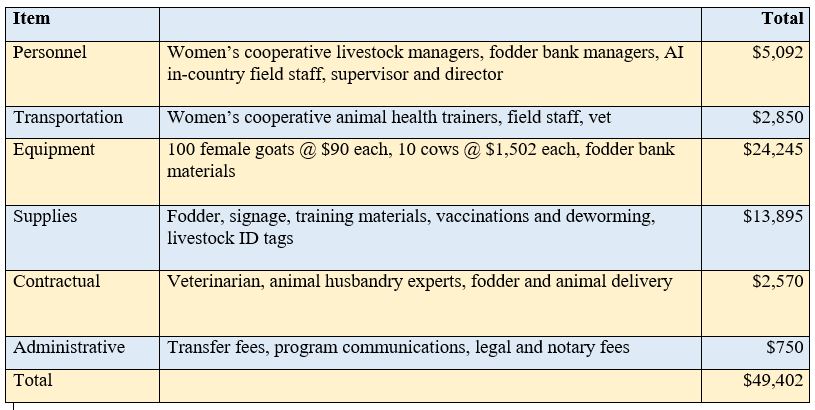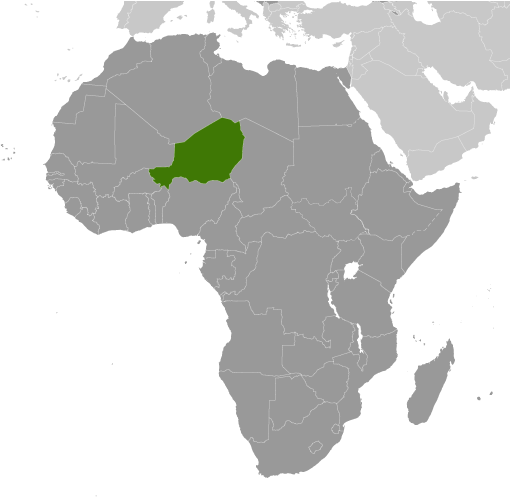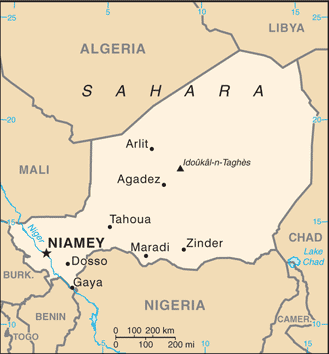
Mission
Amman Imman empowers and helps preserve Africa’s most vulnerable indigenous people. It establishes points of civilization emphasizing the role of women and engaging youth as guiding forces for societal stability, optimism and resilience.
Life Challenges of the Women Served
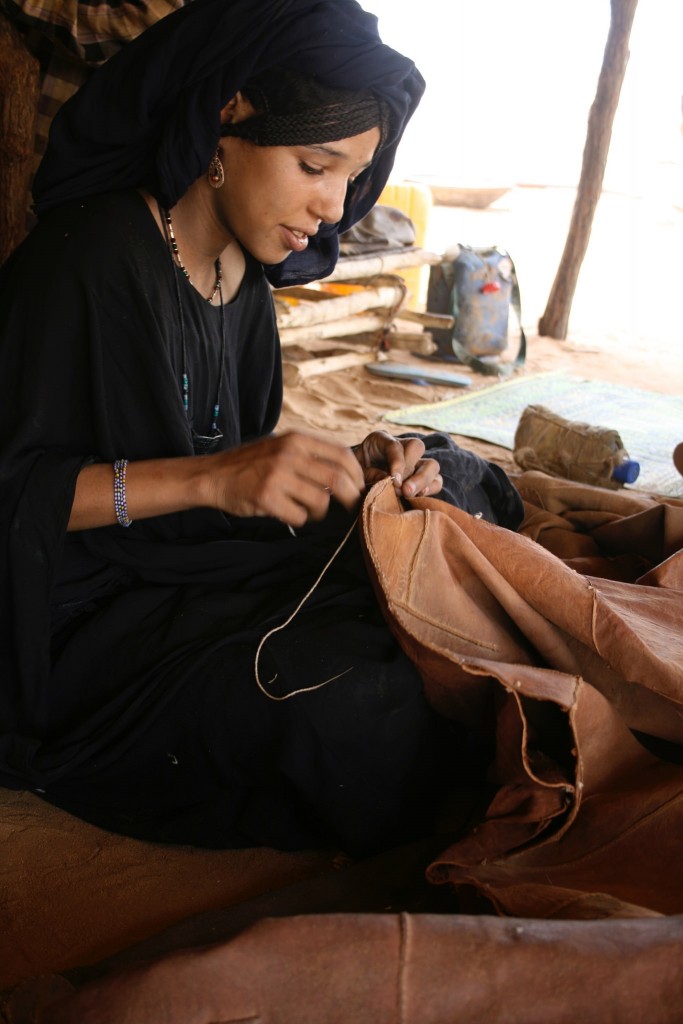 Niger’s Azawak region is an arid valley about the size of Florida that sits on the edge of the Sahara Desert. The Azawak Tuaregs are a nomadic group that herd cattle, camels, goats and sheep. Recently, however, many have been forced into village life due to harsh environmental conditions, inaccessible healthcare, insufficient nutrition and scant rainfall that forces children to walk up to 30 miles a day in search of water – often in vain. In less than a decade, annual rainfall has dwindled from five months to one month, resulting in a devastating loss of livestock, leaving families without food and economic resources, and prompting many to abandon the pastoral life.
Niger’s Azawak region is an arid valley about the size of Florida that sits on the edge of the Sahara Desert. The Azawak Tuaregs are a nomadic group that herd cattle, camels, goats and sheep. Recently, however, many have been forced into village life due to harsh environmental conditions, inaccessible healthcare, insufficient nutrition and scant rainfall that forces children to walk up to 30 miles a day in search of water – often in vain. In less than a decade, annual rainfall has dwindled from five months to one month, resulting in a devastating loss of livestock, leaving families without food and economic resources, and prompting many to abandon the pastoral life.
The village of Tangarwashane became home to 2,100 people, comprised of 150 families and 900 children under the age of five. Although the birthrate in Niger is among the highest in the world, half the children in Tangarwashane die before age five due to complications of dehydration, malaria and malnutrition. Less than 1 percent of the population is literate and incomes are less than $1 a day. It is common for girls to marry young and to have an average of seven children, thus continuing a profound cycle of poverty. Almost 85 percent of the men in Tangarwashane migrate for work, leaving the women to provide daily care and sustenance for their children on approximately $10 per month. The most vulnerable of these women are those who do not have livestock to feed their children or to sell if necessary. The children of these women are chronically malnourished and extremely susceptible to disease and death.
The Project
The people of the Azawak are a minority group inhabiting an area plagued by drought. There has not been a focus on mitigating the effects of climate change or helping the population transition from nomads to settled villagers. To ease their burden, Amman Imman constructed a deep borehole well in 2007 that supplies sustainable, fresh, year-round access to water. This precious resource has allowed women to engage in economic development activities, including a women’s cooperative to manage the borehole, a school to educate their children, a cereal bank to help alleviate the severe food shortage and other revenue-generating endeavors.
The next step is to provide a resource that will provide even greater economic and health benefits. The HERds program will loan female livestock to women in Tangarwashane. This will allow these women to sell livestock when necessary to purchase food, clothes, medicine and school supplies. Women will no longer rely solely on their husbands for money, which reduces their vulnerability when their husbands migrate. Once a woman establishes economic independence – even in the Azawaks’ patriarchal culture – they are able to make decisions about their personal wealth without interference.
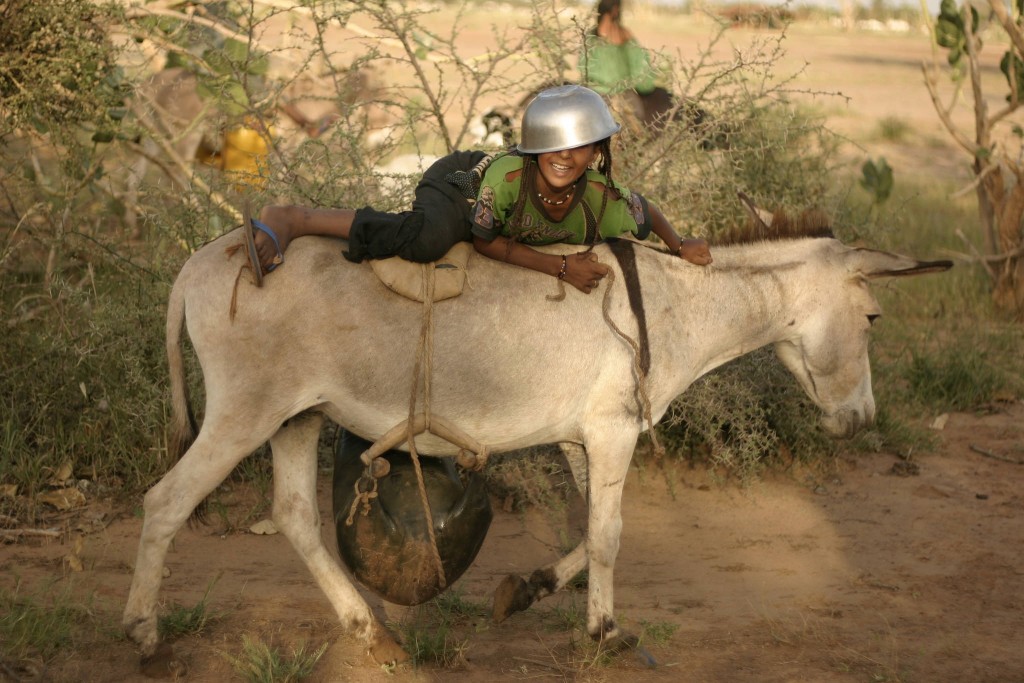 AI will loan livestock to the 60 most vulnerable women in Tangarwashane. This will enhance the lives of the women, their 420 children under 5 and 45 women’s cooperative members who participate in animal husbandry training. The following year, 60 more women will be loaned livestock, and within a few years the entire community of women will benefit. The animals will be used for reproduction and lactation, thereby providing numerous benefits:
AI will loan livestock to the 60 most vulnerable women in Tangarwashane. This will enhance the lives of the women, their 420 children under 5 and 45 women’s cooperative members who participate in animal husbandry training. The following year, 60 more women will be loaned livestock, and within a few years the entire community of women will benefit. The animals will be used for reproduction and lactation, thereby providing numerous benefits:
- Enhanced nutrition for children
- Greater financial security for women
- Access to nutritious foods and materials – milk, cheese and, when necessary, meat, fiber and skins
- A “traditional bank account” where conventional banking facilities are non-existent. Livestock is a reliable way to store “cash” for future and/or emergency needs.
- 25 percent more economic and food security compared to areas where crops are grown but there are no livestock.
Amman Imman will accomplish these goals by providing the animals, the necessary training to care for them and the infrastructure to create a viable, sustainable program. This includes:
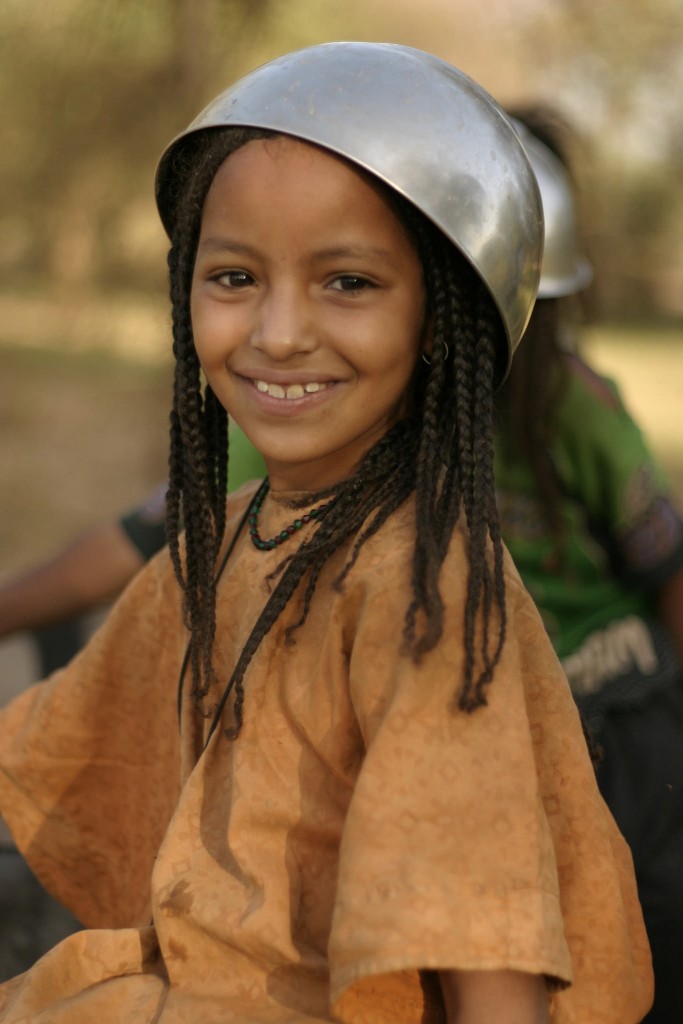 Establishment of a fodder bank – A fodder bank management committee will be created to set the price of fodder and begin training committee members. Working with the women’s cooperative, this committee will identify the most vulnerable women beneficiaries, including who will receive cows and who will receive goats. The fodder bank will provide low cost feed, but at a margin that allows replenishment of the fodder bank for continual use.
Establishment of a fodder bank – A fodder bank management committee will be created to set the price of fodder and begin training committee members. Working with the women’s cooperative, this committee will identify the most vulnerable women beneficiaries, including who will receive cows and who will receive goats. The fodder bank will provide low cost feed, but at a margin that allows replenishment of the fodder bank for continual use.
Animal husbandry training – Experienced AI women plus a professional team will provide training in best practices for animal husbandry. This training will be available to the selected women in Tangarwashane as well as other women and girls who are interested.
Livestock purchase and distribution – Committee members and AI field staff members will arrange for the purchase and delivery of animals and assure that they are tagged and properly distributed.
Livestock redistribution management – At the end of one year when offspring have been weaned, the livestock will be returned to AI. First generation offspring will be tagged, vet checked and recorded. Another set of women will be identified and the livestock will be re-loaned.
Number of women and girls served:
- Year one: Direct – 525* Indirect – 480**
- Year two: Direct – 525* Indirect – 480**
*60 recipient women; 420 children under the age of 5; 45 women’s cooperative members will attend training.
**The remaining 480 children in the community and extended family.
Sustainable Development Goals
Questions for Discussion
- What emotional and psychological benefits do you think the Tangarwashane women will experience once they have livestock to manage?
- Why is it important that Amman Imman representatives be involved in the initial distribution of animals as well as the animal husbandry training?
- What will young girls learn as they watch their mothers tend livestock?
How the Grant Will be Used
DFW’s donation of $49,402 for one year will pay for a livestock loaning program, fodder bank and animal husbandry training. This includes:
- Personnel: Program staff (Program Director, Field Supervisor and Field Staff) supervise the training of the HERds Livestock Managers and Fodder Bank Managers, coordinate the implementation of the project and conduct monitoring and evaluation on the ground.
- Transportation: Women from other villages who are trained in AI’s livestock program along with a professional team will be transported to Tangarwashane to train women in the community in best practices. This category also includes transportation of Amman Imman field agents and select members of the women’s cooperative to the market to purchase the animals. Transportation for staff to launch and conduct monthly follow up is also included.
- Equipment: Materials consist of storage containers, scoops, lock box and office supplies.
- Supplies: Costs for vaccines and deworming of animals.
- Administrative: Legal and Notary fees will originate in Niger. Communication costs are accrued in the USA and Europe for communication with the Nigerien staff. Transfer fees refer to exchange rate costs and wire transfer fees, originating in the USA.
Why We Love This Project/Organization
We love this project because it provides an asset for participants’ wealth and individual economic reserves, as well as training and a support system. It supports the nutrition of children and provides mothers with the means to purchase food, clothes, medicine, and pay for their daughters’ school materials.
Evidence of Success
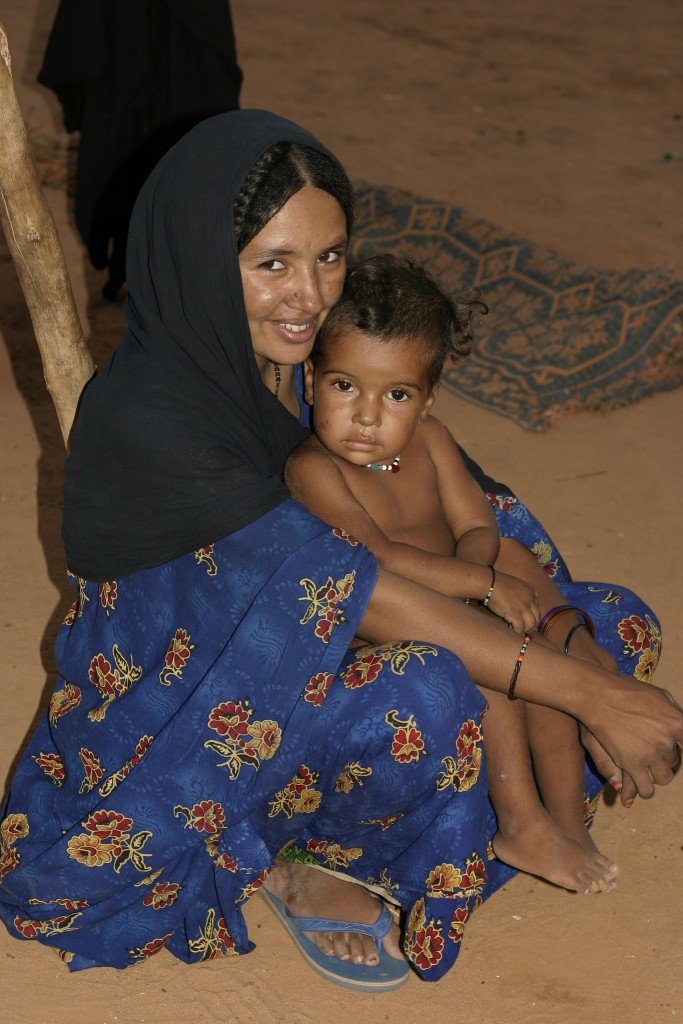 Since 2008, Amman Imman, or “Water is Life,” has helped preserve and improve the lives of Niger’s vulnerable indigenous peoples. Through its Oases of Life program, AI has drilled locally-managed water boreholes, thus securing permanent water sources for 100,000 people and 140,000 animals. Environmental protection is a core component of all Amman Imman programs, as it was environmental change that instigated the needs of the community.
Since 2008, Amman Imman, or “Water is Life,” has helped preserve and improve the lives of Niger’s vulnerable indigenous peoples. Through its Oases of Life program, AI has drilled locally-managed water boreholes, thus securing permanent water sources for 100,000 people and 140,000 animals. Environmental protection is a core component of all Amman Imman programs, as it was environmental change that instigated the needs of the community.
Economic security and independence have changed the status of thousands of women. Amman Imman has given hope and security to these women through the establishment of women’s cooperatives, artisan training and livestock establishment programs like HERds. Literacy programs help women manage their own small businesses.
AI has successfully created village stores, provided gardening training and created women’s cooperatives that allow 10,000 people to access affordable grain and fodder for their animals. The organization stocks over-the-counter medications, has distributed mosquito nets to 7,000 people, and provides education on HIV/AIDS, sanitation, and contraception, among other health initiatives. This includes the construction of the Kijigari in-patient care unit that serves 30,000 people.
AI also advocates for universal primary school, focusing on education for girls and girl-included classrooms. The organization built a school, provided materials to 20 other schools, and has taught hundreds of men and women to read, count, and manage their projects.
Voices of the Girls
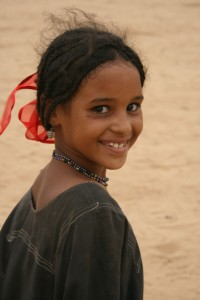 “We are told from the hospital that they [children] do not have enough vitamins. That they eat poorly and are malnourished. I would like help by having cows. That is our true wealth. And we have lost all of our cows.”
“We are told from the hospital that they [children] do not have enough vitamins. That they eat poorly and are malnourished. I would like help by having cows. That is our true wealth. And we have lost all of our cows.”
Gotchi Koriji, mother
“If you are willing to concede that our world is changing at an alarming rate, if you are willing to contemplate the possibility that our very own children are at risk of enduring hardships we never fathomed, then you might feel strong compassion for those already in this situation.”
Tercelin Kirtley, brother of Amman Imman founder Ariane Kirtley. The Kirtleys spent their early years travelling across the Sahara with their journalist parents.
About the Organization
In 2005, Amman Imman founder and Executive Director Ariane Kirtley visited the pastoral region of the Azawak, Niger, as a Fulbright Scholar conducting public health research. There, she witnessed the cruel living conditions endured by the Azawak, and learned that they were receiving little or no assistance. This, combined with her years growing up in Niger and working for CARE International, helped Kirtley identify the Azawak people as especially vulnerable. In fact, while conducting her research, several of her new Azawak friends died.
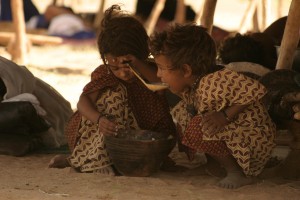 Kirtley could not stop thinking about the pure, fresh water beneath her feet. That water lay 600 feet below in an underground aquifer, under the sand and solid African bedrock. This would be challenging to drill through, but she was determined to bring water to these people. After unsuccessfully requesting support from large international NGOs and the government of Niger, Kirtley began Amman Imman: Water is Life in 2006, receiving official non-profit status in 2008. Amman Imman’s initial focus, increasing water security, established five boreholes in less than six years at a cost of $180,000 each.
Kirtley could not stop thinking about the pure, fresh water beneath her feet. That water lay 600 feet below in an underground aquifer, under the sand and solid African bedrock. This would be challenging to drill through, but she was determined to bring water to these people. After unsuccessfully requesting support from large international NGOs and the government of Niger, Kirtley began Amman Imman: Water is Life in 2006, receiving official non-profit status in 2008. Amman Imman’s initial focus, increasing water security, established five boreholes in less than six years at a cost of $180,000 each.
As AI brought water and hope to the Azawak, the organization’s vision grew. With Amman Imman’s construction of water-bearing boreholes came other forms of development: schools, health clinics, commerce, agriculture, livestock and environmental protection programs. Most importantly, through the provision of sustainable and permanent water sources, Amman Imman saves thousands of lives and provides hope to the half-million people of the Azawak region.
Amman Imman works directly with Niger’s Ministry of Hydraulics, Agriculture, Health, and Education – both at a local and national level – for water, school, literacy, gardening and health projects. Specialists help determine beneficiary communities, and serve as advisors and supervisors in addition to monitoring and evaluation.
Where They Work
Niger was ranked the least developed country in the world in 2015 due to many factors, including food insecurity, a weak educational sector, lack of industry, and sharp population growth. It has the highest birthrate and youngest median age (15.2) of any country on the planet. One out of four men are literate, but only 11 percent of women are literate. They typically give birth by age 18 and go on to have an average of seven children. Eighty percent of the 18 million Nigeriens are Muslim and the primary language is French. The Hausa and Zarma ethnic groups comprise approximately 75 percent of the population, and the Tuareg and Fulani tribes make up 17 percent.
A landlocked, sub-Saharan country, Niger faces security issues on its borders with Libya, Mali and Nigeria. Since its independence from France in 1960, it has experienced multiple leaders and coups. Today, Niger’s economy pivots on subsistence crops, livestock and some of the world’s largest uranium deposits, which have prompted terrorist activity. Drought is a serious, chronic problem.
Most of the Tuareg and Fulani that inhabit the vast plains of Niger’s Azawak region are nomads who live in camps of approximately 50 to 150 members. During the rainy season, they move every three to four days in search of the greenest pastures for their livestock. During the dry season, they move often to find water, but prefer to stay in the vicinity of their “home territory,” land passed down from one generation to the next.
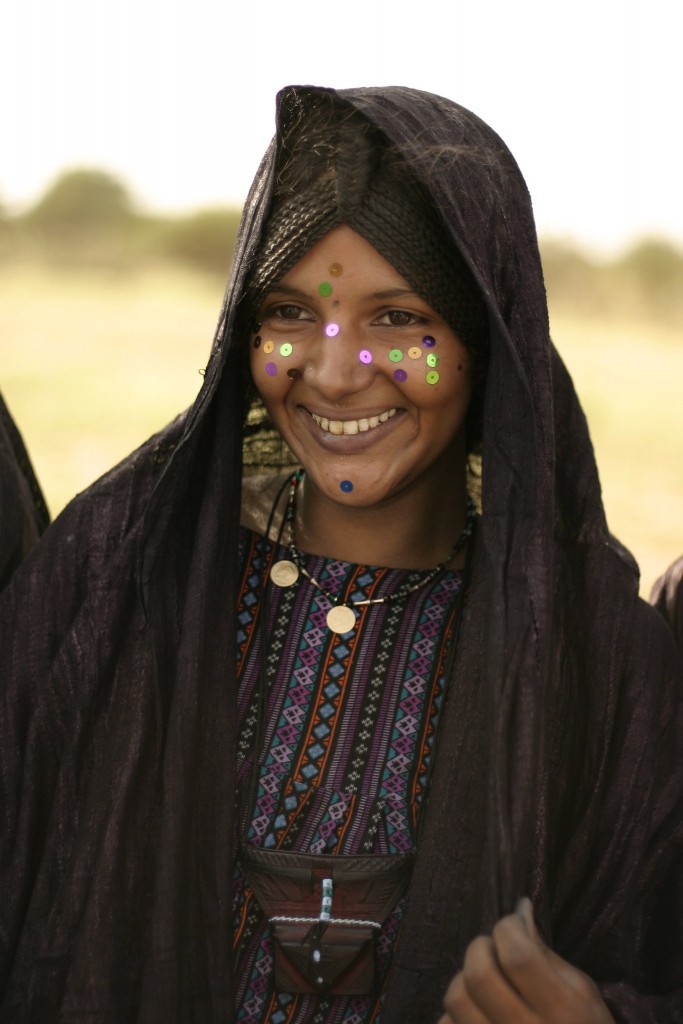 Long known as warriors, traders, and capable guides through the arid and rugged Sahara Desert, the Tuareg find their independence severely threatened as repetitive droughts kill their herds and international borders greatly limit their nomadic lifestyle. Due to economic pressure and dramatic livestock losses, some Tuaregs have abandoned their nomadic lifestyle and now live in villages. Without animals to provide milk and meat, or a means of bartering for trade goods, the nomads settle into small villages of 100 to 300 people and attempt to live off sustenance agriculture, mostly growing the grains millet and sorghum.
Long known as warriors, traders, and capable guides through the arid and rugged Sahara Desert, the Tuareg find their independence severely threatened as repetitive droughts kill their herds and international borders greatly limit their nomadic lifestyle. Due to economic pressure and dramatic livestock losses, some Tuaregs have abandoned their nomadic lifestyle and now live in villages. Without animals to provide milk and meat, or a means of bartering for trade goods, the nomads settle into small villages of 100 to 300 people and attempt to live off sustenance agriculture, mostly growing the grains millet and sorghum.
Since 2006, Amman Imman has been responsible for four major boreholes in the Nigerien villages of Tangarwashane (2007), Chinwagari (2008), Kijigari (2010) and Ebagueye (2012).
A Closer Look at health and nutrition in Sub-Saharan Africa
Sub-Saharan Africa (SSA) is home to some of the most undernourished people in the world, due to profound poverty, challenging environmental conditions, staggering population growth, limited resources, and lack of access to healthcare, among other factors. A full 239 million people in SSA are considered food-insecure, mostly living on cereal grains and root crops. These families eat very little animal protein or fruits and vegetables, which are unavailable or too expensive. As a result, 40 percent of 5-year olds are mild or moderately malnourished, which leads to growth retardation and biochemical changes. In fact, malnutrition is the single largest killer of children under 5 in the developing world, and the problem does not lessen in adolescence and adulthood.
Lack of a varied or adequate diet has led to numerous vitamin and mineral deficiencies, which has devastating effects on physical and mental health. Three of the primary culprits are a lack of vitamin A, iron, and iodine.
| Deficiency | Result |
| Vitamin A | compromises immune system, leads to early death of 1 million children per year |
| Iron | leads to anemia and increased risk of maternal death, impairs mental development of up to 60 percent of 6-to-24-month olds |
| Iodine | lowers intellectual capacity, causes 20 million babies per year to be born mentally impaired |
In the past few decades, individuals in urban SSA areas have gained access to foods prevalent in Western diets. These include refined foods high in fat and sugar and low in micronutrients. This, combined with a more sedentary lifestyle and access to modern means of transportation, has resulted in an increased number of overweight individuals, and a significant rise in heart disease and type 2 diabetes. Those living in rural areas cope with other food issues, as low productivity agriculture leads to poor health and malnutrition. Two-thirds of SSA countries require external food assistance, yet the shortage remains.
However, in SSA there is never a shortage of factors that lead to the susceptibility of infectious diseases: poverty, lack of knowledge, poor hygiene, lack of potable water, poor housing and lack of access to healthcare. Those who do not have these necessities often delay or cannot access treatment, which in turn prolongs or worsens disease. These diseases vary depending on the seasons and geographic regions. For instance, dysentery and malaria typically strike during the rainy season, while respiratory tract infections are more prevalent during cold weather. Approximately one-third of diseases in SSA can be attributed to malnutrition, while one in ten are due to poor water and sanitation.
A key factor in escaping poverty and preventing infant under-nutrition is education. Women who gain an education are not only learning the value of feeding their families healthy food, they are helping to break the cycle of intergenerational malnutrition. Advancements in agriculture also play a role. To date, the emphasis has been on maximizing food production, with little regard to the underlying nutritional value. Thus, agricultural interventions have not improved nutritional outcomes. In the future, the hope is that agriculture and nutrition will play a combined, vital role in securing a healthy diet that reduces the incidence of disease and death.
Source Materials
http://www.undp.org/content/dam/rba/docs/Working%20Papers/Nutrition%20Challenge.pdf
http://www.ncbi.nlm.nih.gov/pubmed/12343663
http://www.ammanimman.org/Who_We_Are/who_history.html
http://www.ammanimman.org/Program/azawak.html
https://www.cia.gov/library/publications/the-world-factbook/geos/ng.html

